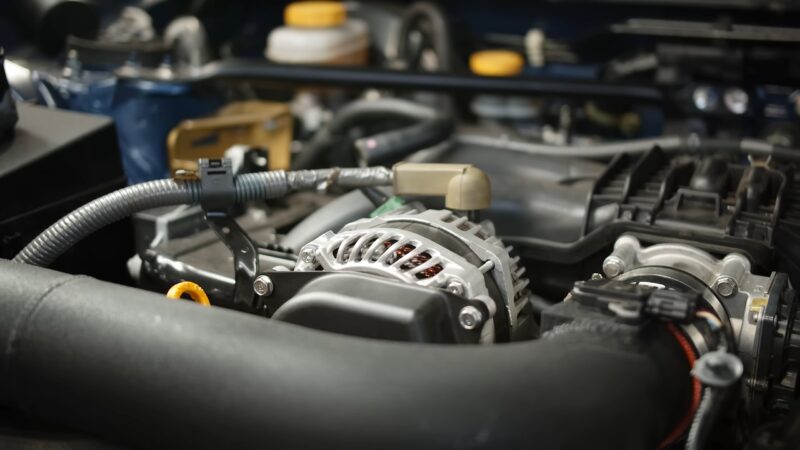The turbocharger is like the unsung hero of the engine world, giving our cars that extra oomph when we need it. But just like any other hero, it too can face challenges.
Recognizing a faltering turbocharger early on can save you a lot of hassle, not to mention some serious cash. So, let’s get to know our turbocharged friend a bit better, shall we?
Fun Fact: Did you know that the concept of turbocharging dates back to the early 20th century? Alfred Büchi, a Swiss engineer, was the first to receive a patent for using a turbocharger in 1905. Talk about a blast from the past!
What is a Turbocharger?
A nifty little device that forces more air into the combustion chamber of an engine. Think of it as a personal trainer for your car’s engine, pushing it to work harder and perform better. By doing so, it significantly boosts the engine’s efficiency and power output.
Now, why is this so important? Well, in simple terms, the more air your engine gets, the more power it can produce. It’s like giving your engine a shot of adrenaline! This not only gives you a smoother ride but also ensures you get that extra speed when you need it most.
Pro Tip: Always listen to your car. It often tells you when something’s not right, especially when it comes to turbochargers. A slight change in engine performance can be an early sign of a turbo issue.
Signs and Symptoms of a Bad Turbocharger
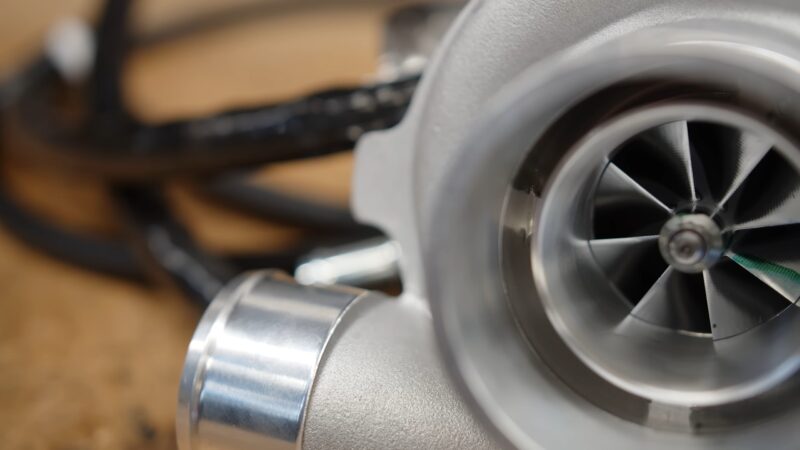
- Loss of Power: Ever felt like your car just doesn’t have the same zest it used to? Reduced engine power can be a telltale sign of a malfunctioning turbocharger. When the turbo isn’t working efficiently, it can’t supply the engine with enough air, leading to decreased power.
- Excessive Smoke from the Exhaust: If you’re seeing more smoke than usual from your exhaust, it’s time to pay attention. Different smoke colors can indicate various issues:
- Black Smoke: This usually means there’s too much fuel and not enough air in the combustion chamber. A faulty turbo might be the culprit.
- White Smoke: If you’re seeing white smoke, it could indicate that coolant is entering the combustion chamber. This might be due to a cracked turbo housing or damaged seals.
- Blue Smoke: Blue smoke is a sign of oil burning. A malfunctioning turbo can cause oil to leak into the combustion chamber, leading to this blue haze.
- Strange Noises: Your car shouldn’t sound like a haunted house. If you hear whining, grinding, or hissing noises, it’s a clear indication that your turbocharger might be facing some issues. Each noise can be linked to specific problems, such as worn bearings or damaged blades.
Fun Fact: Turbochargers can spin at up to 250,000 RPM! That’s faster than most commercial jet engines. No wonder they can face wear and tear!
Common Causes of Problems
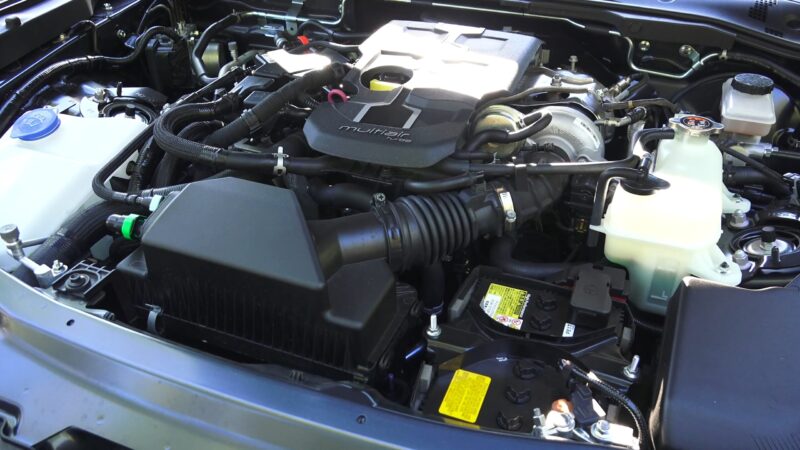
Lack of Maintenance
The heart of many turbocharger issues often beats to the rhythm of poor maintenance. As Mahle’s expert, Larry Ireland, points out, the most frequent turbo-killer is simply neglecting regular engine upkeep.
Imagine not changing your car’s oil and letting it gum up. This negligence can lead to the clogging of the return line, preventing the turbo from returning its oil, causing leaks.
And with a turbocharger being such a precision device, old, gritty oil can wreak havoc on its moving parts. For instance, this gritty substance can damage the shaft or even cause the impeller to collide with the turbo housing.
Oil and Coolant Issues
Lubrication is the lifeblood of a turbocharger. Without it, things can go south pretty quickly. Inadequate oiling, especially from clogged screens that some OEMs place on the oil fill to the turbo, can lead to rapid failures.
The type of oil also matters. While early turbo engines often used full synthetic oil, many manufacturers now specify semi-synthetic.
The key takeaway? Don’t ignore the oil recommendations from the original equipment manufacturer (OE), both in terms of oil type and viscosity.
Pro Tip: Always stick to the recommended oil filter and air filter replacement schedules. It’s not just about the engine internals; it’s also about ensuring the turbocharger gets the care it needs.
Overboost or Underboost Conditions
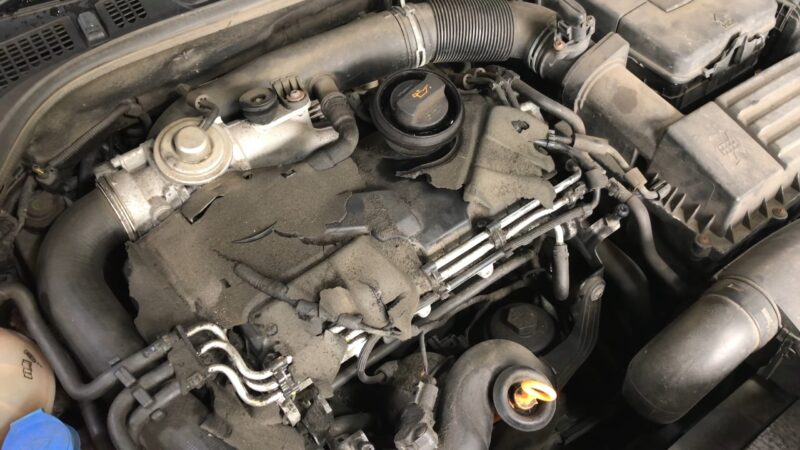
Turbochargers thrive in a tightly-controlled environment, dealing with pressure, heat, and high-speed operations. But when they’re exposed to conditions of overboost (too much pressure) or underboost (too little pressure), it strains the turbocharger.
These conditions can arise from various factors, including issues with other engine components or even the turbocharger’s design flaws.
Diagnosing Problems
Before diving into any repair or replacement, it’s crucial to diagnose the problem accurately. While some signs are evident, like excessive smoke or strange noises, others might be subtle.
Here’s where professional diagnosis becomes invaluable. Experts can pinpoint the exact cause, be it inadequate lubrication, foreign object damage, or excess heat.
Foreign Object Damage
Turbochargers spin at incredibly high speeds. Introducing debris into this high-speed environment can lead to severe damage.
For instance, in diesel engines, a broken injector tip can travel through the exhaust valve, reach the turbine side of the turbocharger, and damage the turbine wheel. Often, this kind of damage results from maintenance or repairs done without proper cleanup.
Excess Heat
Too much heat is a turbocharger’s enemy. Turbochargers are designed to operate within specific temperature ranges. Exceeding these can lead to housing damage due to the metal’s expansion and contraction. Repeatedly operating the turbocharger outside its specified range or even design flaws in the housing can lead to cracks and other damages.
Replacement Cost
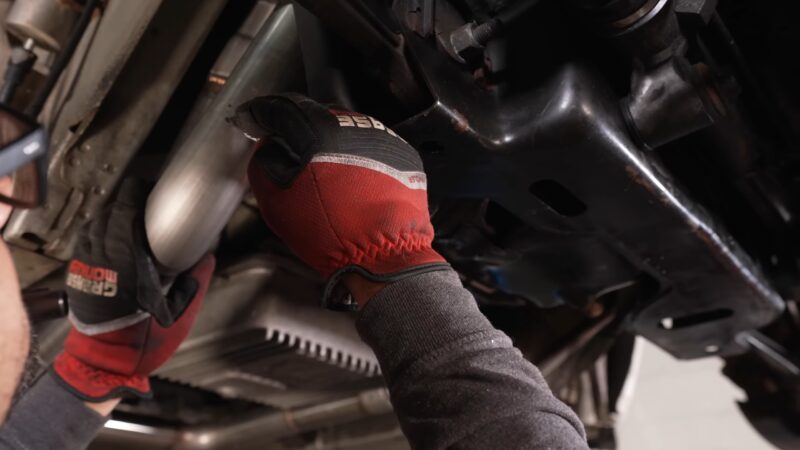
When it comes to replacing a faulty turbocharger, several factors can influence the cost
- Parts and Labor Costs: The basics. Depending on where you get the work done and the parts you choose, this can vary.
- Turbocharger Brand and Quality: Not all turbochargers are created equal. Opting for a high-quality brand might cost more upfront but can save you in the long run.
- Vehicle Make and Model: A luxury sports car’s turbocharger will likely cost more to replace than that of a standard sedan.
Average Cost Range
While it’s challenging to pin down an exact number without specifics, turbocharger replacement can range from a few hundred to several thousand dollars. Always remember, the variability is based on the factors mentioned above.
DIY vs. Professional Replacement
Tempted to replace that turbocharger yourself? While it might save you some bucks, it’s essential to weigh the pros and cons. Professionals have the expertise and tools to ensure the job is done right.
However, if you’re confident in your skills and have experience, a DIY approach might be feasible. Just ensure you’re well-informed and prepared.
Fun Fact: The world’s largest turbocharger is fitted to the largest container ships. It’s almost as big as a small car!
Preventing Issues
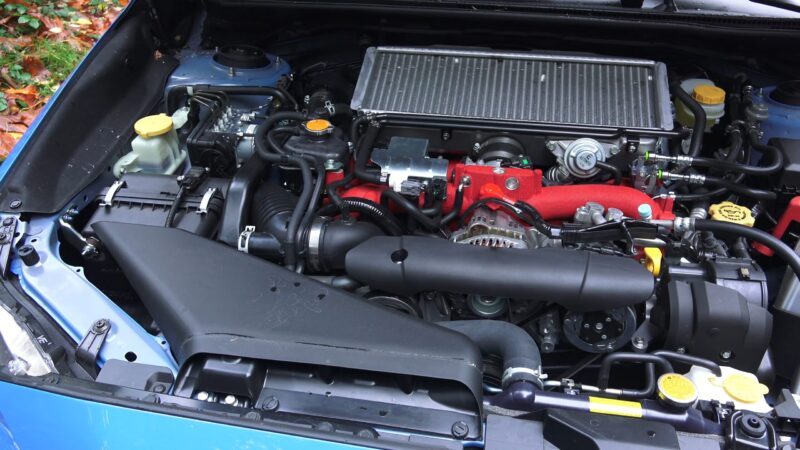
Maintenance Tips
The key to a long-lasting turbocharger is regular and timely maintenance. Here are some essential tips to keep your turbo in top shape:
- Regular Maintenance: Ensure your vehicle is serviced on time and consistently. This includes checking and replacing the oil filter and air filter as per the maintenance schedule.
- Timely Oil Changes: Change the engine oil correctly and punctually. If you often make short trips, consider shorter oil change intervals.
- Use Quality Engine Oil: The engine oil should meet the prescribed quality and viscosity. If it’s too thin, it won’t provide adequate lubrication, especially at high temperatures. Conversely, if it’s too thick, it might not reach vital parts quickly or dissipate heat efficiently. The right quality engine oil minimizes the risk of significant viscosity changes and contamination.
- Gentle Startup: After starting the engine, let it run at low revs initially. This practice allows the engine oil to warm up gradually, ensuring a robust lubrication film in the turbo.
Driving Habits
Your driving habits play a pivotal role in the health of your turbocharger. For instance, after a long drive or high-speed run, allow your engine to cool down gradually. This practice can significantly extend the lifespan of your turbocharger.
Pro Tip: After starting your engine, especially in cold weather, let it idle for a few minutes. This simple habit can ensure proper lubrication and potentially add years to your turbocharger’s life.
FAQ
Why are turbochargers becoming more common in modern vehicles?
They are becoming prevalent due to stricter emission regulations. Manufacturers opt for smaller engines equipped with turbochargers to meet these standards.
By pressing more air into the engine, turbochargers allow for more fuel to be burned, providing additional power when required. When this extra power isn’t in use, the smaller engine operates efficiently, consuming less fuel and emitting fewer CO2 emissions.
How does a turbocharger’s RPM compare to other machinery?
They can rotate at incredibly high speeds, reaching up to 250,000 RPM. To put this into perspective, this speed surpasses most commercial jet engines, emphasizing the immense stress and wear they can experience.
What role does engine oil play in turbocharger health?
It provides necessary lubrication, preventing wear and tear. The quality and viscosity of the oil are crucial. If the oil is too thin, it might not offer adequate lubrication, especially at high temperatures. Conversely, if it’s too thick, it might not reach essential parts quickly or dissipate heat efficiently.
Is it possible to avoid a complete turbo replacement if problems arise?
Yes, in some cases, a complete turbo replacement can be avoided. Early diagnosis and intervention are key. For instance, if the issue is due to contamination or minor wear, specific parts can be replaced or cleaned. However, if the damage is extensive, a full replacement might be the only solution.
Conclusion
Turbochargers are like the heart of your car’s engine, pumping in that extra power when needed. But like any heart, it needs care and attention.
Recognizing the signs of a bad turbocharger early on, understanding its common problems, and taking preventive measures can save you from hefty repair bills and ensure a smooth driving experience.
Remember, it’s not just about the drive; it’s about understanding and caring for the machine that powers it. So, keep an ear out for any unusual sounds, stay on top of your maintenance schedule, and drive responsibly. Your turbocharger, and indeed your car, will thank you for it!
Safe travels!

